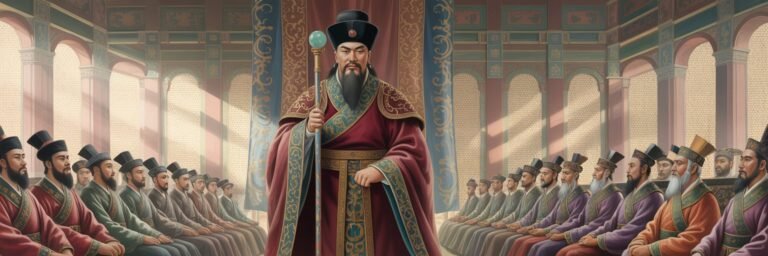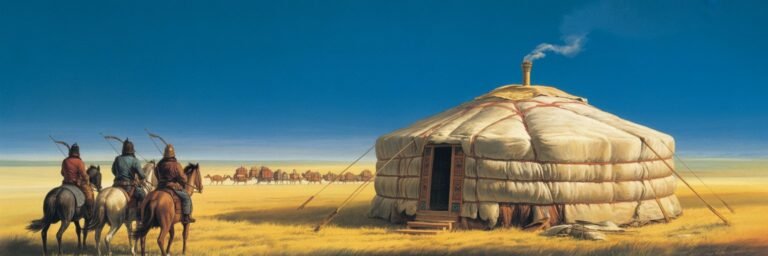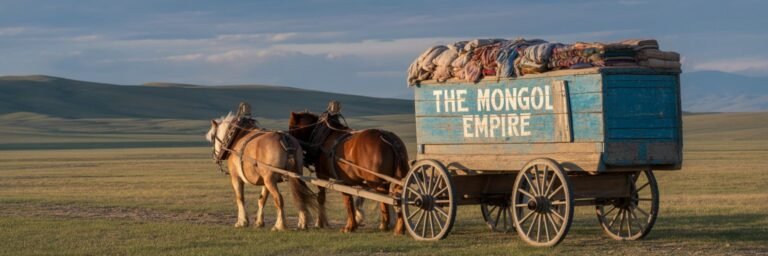INTRODUCTION
A dull afternoon transformed into a magical journey to the past as I flicked through the pages of “The Secret History of the Mongols.” Swept up in the whirlwind of the Mongol Empire, the passion, intensity, and turbulence of an era long gone flooded my consciousness. The evolution of a group of nomadic tribes into an expansive empire blending diverse peoples, cultures, and ideas: This is the essence of the Mongol Empire.
The Mongol Empire (1206-1368), the largest contiguous land empire in human history, encapsulates an astonishing narrative of nomadic visions, unmatched military strategy, and the abandon of conquest. Throughout this article, we will embark on an expedition to unravel the true historical narrative of the Mongol Empire, unearthing its enduring mysteries, deconstructing controversies, and exploring its profound cultural and historic implications.
HISTORICAL BACKGROUND
The rise of the Mongol Empire is intertwined with the captivating story of Genghis Khan. Born as Temujin in the mid-12th century, he encountered a reality of tribal conflict, political turmoil, and survival struggles. These harsh conditions forged a man known for his cunning ability as a Jinong, a traditional Turco-Mongol plebiscitary chieftain, and his inimitable knack for diplomacy.
In 1206, he was acknowledged as Genghis Khan, the universal ruler, following his politically calculated unification of the Mongol tribes, marking the birth of the Mongol Empire. Genghis Khan, his sons, and grandsons propagated this empire through military conquests stretching across parts of Asia, Europe, and Africa, incorporating millions into a contiguous land empire unseen before.
THEORIES AND INTERPRETATIONS
The legacy of the Mongolian Empire is multifaceted, caught within the tension between marvel and terror, amalgamation and annihilation. Contemporary interpretations often label it as a barbaric reign marked by an appetite for warfare and bloodshed based on the catastrophic population declines and physical destruction noted in chronicles from conquered cities.
However, such a singular view often obfuscates the nuances of Mongol rule. Prominent historians like Nayanjot Lahiri and Timothy May dispute the simplification of Mongol reign into a period of savagery. They contend that the Mongols established law and order, implemented pragmatic administrative policies, stimulated transcontinental trade, notably along the Silk Road, and fostered cultural and religious tolerance.
MYSTERIES AND CONTROVERSIES
Famed as the conquerors of the medieval world, the Mongols are equally enigmatic. An enduring mystery is the death of Genghis Khan in 1227. While the “Galician-Volhynian Chronicle” claims he perished in battle against the Chinese, “The Secret History of the Mongols” mentions a fall from a horse. However, Mongol secrecy and the prohibition against discussing royal deaths has led to a spectrum of theories, including assassination and illness, confounding any definitive conclusion.
Additionally, the sudden Mongol withdrawal from Europe after the Battle of Mohi in 1241 is a hotbed of historical controversy. The conventional explanation focuses on the death of the Great Khan Ögedei requiring electors to return to the Mongolian heartland. However, some historians propose potential logistical difficulties, including issues concerning supplies and grassland exhaustion as reasons for this inexplicable retreat.
SYMBOLISM AND CULTURAL SIGNIFICANCE
The Mongol Empire symbolizes the fascinating possibilities of nomadic culture transforming into a dominant political entity. From an anthropological viewpoint, their rule underlines the fluidity of cultural identities, as seen in their syncretic practices blending elements from Chinese, Persian, and other cultures, impacting literature, architecture, and religions.
The Mongol yasa, although not extant in a singular written form, still radiates respect due to its critical role in maintaining law and order. It also symbolizes the progressive ideology of the Mongols concerning women’s rights, religious tolerance, and trade security.
MODERN INVESTIGATIONS
Modern historical investigation into the Mongol Empire leverages technology and multidisciplinary approaches to enrich our understanding. Genomic analysis has provided insight into the impact of the Mongol lineage, evidencing the genetic legacy present in a significant portion of the Asian population. Meanwhile, landscape archaeology, utilizing satellite imagery and Ground-Penetrating Radar, has aided in uncovering ancient Mongol fortifications, roads, and even Genghis Khan’s purported burial site.
Moreover, research into environmental climatology suggests the Mongol success might partially be attributed to an era of optimal climate conditions in the Mongolian steppe, perfect for fostering large horse populations critical to Mongol warfare.
LEGACY AND CONCLUSION
The Mongol Empire, despite its dissolution in the 14th century, has left an indelible scar and gift to human history. Its legacy reaches beyond the trauma of conquest. Paradoxically, the Mongols seem to have simultaneously wielded a sword and an olive branch.
In the realm of communication, they established the Yam, an efficient postal system. In commerce, they revived and extended the Silk Roads, creating a vibrant transcontinental network of cultural and economic exchange. And in governance, their meritocratic and pragmatic approach strongly influenced the early modern absolutist states in Europe.
The lasting iconography of the Mongols as horse-riding conquerors endures, significantly shaping our understanding of nomadic cultures and empire-building. The Mongol Empire serves as a testament to the volatile dynamics of historical narrative, where amidst the ashes of destruction, the phoenix of synthesis and adaptation arises. A legacy that reminds us of the profound exchanges, devastating conflicts, and enduring transformations that have crafted the tapestry of our shared human history.






